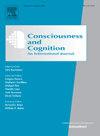Similarities and differences in the effects of different stimulus manipulations on accuracy and confidence
IF 2
3区 心理学
Q2 PSYCHOLOGY, EXPERIMENTAL
引用次数: 0
Abstract
Visual stimuli can vary in multiple dimensions that affect accuracy and confidence in a perceptual decision-making task. However, previous studies have typically included just one or at most two manipulations, leaving it unclear whether each manipulation has a unique effect on accuracy vs. confidence. Subjects indicated whether a tilted Gabor patch was oriented clockwise or counterclockwise from 45°. We included manipulations of the task-defining feature (tilt offset) and four auxiliary, non-task-defining features (size, duration, spatial frequency, and noise level). We found that the four auxiliary manipulations had fairly similar effects on accuracy and confidence. In contrast, the task-defining tilt offset manipulation stood out by affecting accuracy more strongly than confidence. In addition, tilt offset exhibited a supraadditive interaction with all other manipulations for both accuracy and confidence, whereas all auxiliary manipulations exhibited either no interactions or subadditive interactions with each other. Furthermore, tilt offset was the only manipulation for which confidence in incorrect trials decreased with increasing difficulty, while all auxiliary manipulations exhibited the opposite trend. Overall, our results reveal a noticeable similarity among the effects of all four auxiliary (non-task-defining) manipulations on accuracy and confidence, as well as a prominent difference between them and the task-defining manipulation (tilt offset). These results enable a priori predictions of how novel manipulations would affect accuracy and confidence.
不同刺激操作对准确性和信心影响的异同
视觉刺激可以在多个维度上变化,影响感知决策任务的准确性和信心。然而,之前的研究通常只包括一种或最多两种操作,不清楚每种操作是否对准确性和信心有独特的影响。受试者指出倾斜的Gabor贴片是顺时针方向还是逆时针方向45°。我们包括了任务定义特征(倾斜偏移)和四个辅助的非任务定义特征(大小、持续时间、空间频率和噪声水平)的操作。我们发现这四种辅助操作在准确性和信心上有相当相似的效果。相比之下,任务定义的倾斜偏移操作通过影响准确性而不是置信度而脱颖而出。此外,倾斜偏移与所有其他操作在准确性和置信度上都表现出超加性相互作用,而所有辅助操作之间要么没有相互作用,要么表现出亚加性相互作用。此外,倾斜偏移是唯一对错误试验的信心随着难度的增加而下降的操作,而所有辅助操作都表现出相反的趋势。总体而言,我们的结果揭示了所有四种辅助(非任务定义)操作对准确性和置信度的影响之间存在明显的相似性,以及它们与任务定义操作(倾斜偏移)之间的显着差异。这些结果使我们能够先验地预测新操作将如何影响准确性和信心。
本文章由计算机程序翻译,如有差异,请以英文原文为准。
求助全文
约1分钟内获得全文
求助全文
来源期刊

Consciousness and Cognition
PSYCHOLOGY, EXPERIMENTAL-
CiteScore
4.30
自引率
8.30%
发文量
123
期刊介绍:
Consciousness and Cognition: An International Journal provides a forum for a natural-science approach to the issues of consciousness, voluntary control, and self. The journal features empirical research (in the form of regular articles and short reports) and theoretical articles. Integrative theoretical and critical literature reviews, and tutorial reviews are also published. The journal aims to be both scientifically rigorous and open to novel contributions.
 求助内容:
求助内容: 应助结果提醒方式:
应助结果提醒方式:


